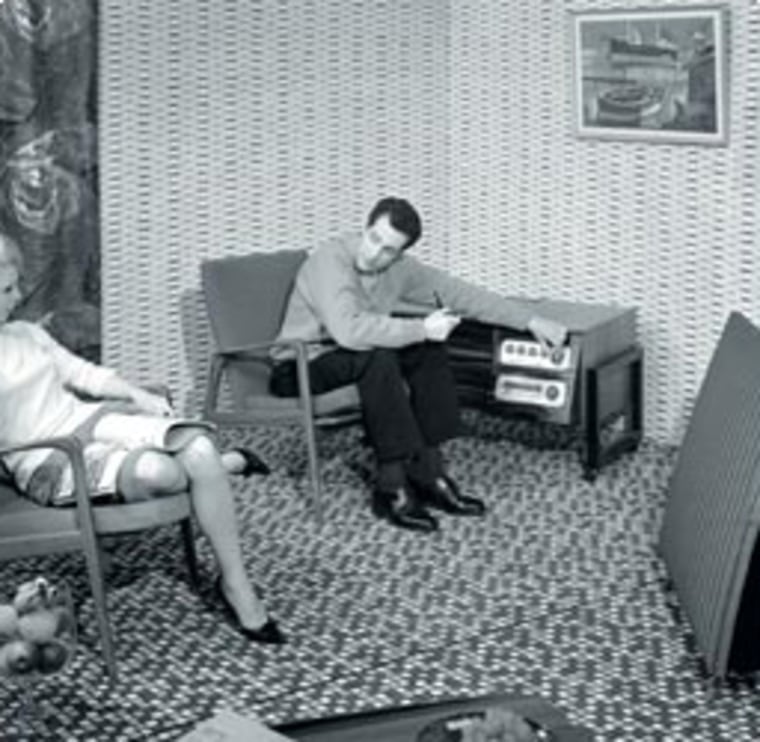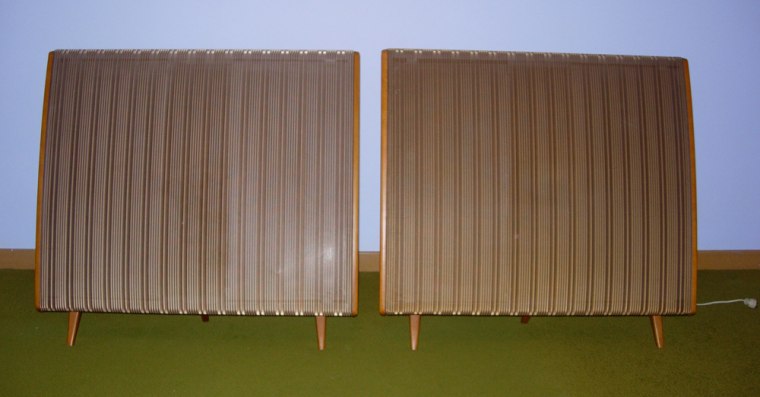This column has been more than two decades in the making. Even though there have been times I wondered why I was carrying heavy boxes around the house, it’s been a labor of love.
After testing dozens of stereo components — some of which cost a small fortune — I think I’ve assembled, at least to my ears, a near-perfect sound system.
Twenty years ago, after fiddling with speakers of all sizes and shapes: little square boxes, lime green flat panels that were 6 feet high, 18 feet long — end-to-end — and 1 inch thick I realized I had not yet found the holy grail.
What I longed for was a pair of loudspeakers designed in the 1950’s by a small British company named QUAD. They were unconventional looking — something like steam radiator room heaters — and very temperamental when it came to associated equipment.
In the mid-80’s I bought a used pair of QUAD ESL-57s from a local shop which, at the time, specialized in used equipment. For the record, ESL stands for electrostatic loudspeakers and 57 for the year they were introduced.
I owned those speakers for less than one day. After letting them warm up overnight (more about that part in a minute) I sat down to listen. It took less than a minute to determine that one speaker was dead. Not completely dead — but I knew that getting it back to normal would be a huge effort. Back they went.
The one good speaker was pretty amazing. Voices, instruments and everything else were perfect. Everything sounding real. That impression has stuck with me until this day.
Not sure why, but I didn’t actively look to purchase another pair. But I did keep my eye on classified ads and then eBay and Audiogon auctions over the years.
QUAD owner and hi-fi expert Ken Kessler wrote a piece for Britain's HIFI News magazine a few years ago asserting that the QUAD ESL-57’s were the greatest hi-fi component ever made. That caught people's attention and prices soared on online auction sites.
Even though I had acquired a number of early QUAD transistor amps and preamps from the early 1970’s I never bought a pair of the speakers. The QUAD gear remained in my closet in case I ever got a pair of ESL-57s.
Finding a good used pair can be tricky. There are lots of things that go wrong inside old QUADs over the years — some of which require hundreds of dollars in repairs. And even if you find a pair of great-sounding speakers they’ll still need expensive overhauling every 10 to 15 years. Many loudspeakers could use some servicing after maybe 20 years of service.
In February, I found a pair of 1962 ESL-57’s that were for sale in Canada. The owner wanted about $1,000 and said they were in perfect shape. After much soul searching I bought them online and drove to Ontario to get them.
QUADs are different from most other speakers in that they plug into the wall as well as your amplifier. Instead of conventional woofers and tweeters, QUADs have drivers made of stretched Mylar (a special plastic sheet) that are moved back and forth by high-voltage electrical force fields.

Mylar is very lightweight and reacts to electrical fields very quickly — the speaker can react instantaneously to changes in the electrical field brought about by changes in the music. What comes out is truly amazing.
When I finally sat down to listen I couldn’t believe what I was hearing. It was the best sound I’ve ever heard in my home — and I’ve had some unbelievable sound systems in my living rooms over the years.
It took the speakers a few more weeks of constant use for all the parts to loosen up and mesh together. That means the amplifiers and other equipment might have been turned off at night but the speakers were never unplugged from the wall.
As you might expect, QUADs need special amplifiers to sound their best. That means they need low-powered amplifiers able to handle the QUAD's unusual power requirements. At the same time, they have to be of the highest sound quality.
I got to audition some absolutely amazing sounding stuff — both tube and transistor designs. Prices ranged from a few hundred dollars for some to a system of amp, preamp and tuner which will set you back more than $13,000. I'll let you know in future columns which ones sound best.
